
Graduate Interview: Nicholas Teaching in Japan
In this article, we’ve had a chat with Nicholas, who is teaching English through the popular JET Programme in Japan. He’s shared with us his best insights on what life as an Assistant Language Teacher is like, and how you too can pursue this career opportunity.
Japan has long been a top ESL teaching destination, not only thanks to the steady demand for English language education, but also for the unique experiences it offers. Teachers can explore opportunities ranging from working as an Assistant Language Teacher (ALT) in public schools through the JET (Japan Exchange and Teaching) Programme to teaching in private “eikaiwa” language academies and universities.
Beyond the classroom, Japan offers a fascinating mix of modern city life and traditional culture, giving teachers the chance to enjoy the excitement of its innovative urban centres as well as the slower pace and charm of the countryside.
Let’s hear what tips and insights Nicholas has for us about teaching English in Japan as an ALT!
About Nicholas
Nicholas is a passionate English teacher from Trinidad and Tobago who set out on a new teaching adventure in Japan. Through the Japanese government’s popular JET Programme, he is now embracing life in rural Japan as an Assistant Language Teacher (ALT).
Name: Nicholas Mohammed
Nationality: Trinidad and Tobago
Profession: Assistant Language Teacher (ALT) in Japan
Experience: 1+ years of teaching experience
What began as a one-year JET adventure for Nicholas has now grown into an ambition to build a long-term career in Japan.
Nicholas’s interview:
💬 Hi Nicholas, could you tell us a bit about yourself?
“Hey there! I’m Nicholas Mohammed from the sunny Caribbean islands of Trinidad and Tobago. I’ve been teaching English professionally for about 1 year now, though if we count my TESOL/TEFL practicum with those amazing 5 AM classes for Tajik students, I have a little more than a year of teaching experience under my belt.”
💬 How did you get started, and what made you decide to pursue an English teaching career?
“Honestly, this career path chose me as much as I chose it. I’ve always loved teaching—whether it was high school math tutoring or university science instruction—but TESOL/TEFL was completely new territory.
After completing both the 120-hour TESOL/TEFL certification and practicum with World TESOL Academy, something just clicked. Seeing my students’ progress and confidence grow week after week lit a fire in me that I couldn’t ignore, and before I knew it, I was applying for teaching positions abroad.”
💬 Where do you currently teach, what is your role, and how did you find the teaching position?
“‘I’m currently living the dream in Japan’s best prefecture of Tottori as a prefectural Assistant Language Teacher (ALT) with the JET Programme. For those who don’t know, JET is incredibly competitive back home in Trinidad—we’re talking hundreds of applicants for maybe 30 spots. I still pinch myself sometimes when I realize I actually made it through that rigorous selection process and now get to call this beautiful place home.”
💬 What inspired you to start teaching English in Japan, and what made you decide on the JET Programme?
“My fascination with Japan started young—I was that kid nerding out over samurai history and traditional architecture. Also in my teenage years, I was obsessed with historical battles and epics, and I would spend hours reading about figures like Oda Nobunaga and the legendary monk Benkei.
But what really sold me on JET was its perfect balance of teaching and cultural exchange. The programme’s stellar reputation and support system were huge factors too—when you’re moving halfway across the world, knowing someone’s got your back makes all the difference. Plus, let’s be real, the chance to experience daily life in rural Japan while getting paid? Sign me up!”
💬 Did you complete your TESOL/TEFL certification course before applying to JET?
“Absolutely! I completed my TESOL/TEFL certification before the interview and my first teaching practicum class was on the morning of my interview. This turned out to be a game-changer.
When they asked about classroom experience during the interview, I could point to what I experienced that very same morning rather than just theory. That hands-on experience with lesson planning and student engagement gave me confidence that definitely showed during the selection process.”
💬 How has your TESOL/TEFL training helped you prepare for teaching in Japan?
“My TESOL/TEFL training has been invaluable here in Japan. The scaffolding techniques I learned work perfectly with Japanese students, who often need careful building up to speaking confidently. Visual aids and interactive activities from my training have been particularly effective—my students love when I use memes or local references to explain grammar points.
The cultural awareness components of the course also helped me navigate the more subtle aspects of Japanese classroom dynamics that you wouldn’t pick up on otherwise.
Also, the fact that I was able to have practical experience via the practicum really helped as it gave me applicable transferable skills. In fact I was super lucky as I was first introduced to TESOL/TEFL as an online teacher which I believe to be much harder than in person teaching.”
💬 Would you recommend that other aspiring JET applicants and ALTs get TESOL/TEFL certified?
“I can’t recommend TESOL/TEFL certification enough for future JETs. Teaching ESL is completely different from other types of instruction—having those specific techniques in your toolkit makes those first chaotic months so much smoother. Plus, it gives you concrete examples to discuss during interviews and shows your serious commitment to teaching.
Several fellow ALTs who came without certification have told me they wish they’d done it beforehand, as even those with teaching experience noted that teaching back home where everyone spoke the same language to teaching ESL in Japan was like night and day.”
Want to start your teaching career? Get TESOL/TEFL certified:
To teach English overseas and online, you’ll need to have an accredited and recognized TESOL/TEFL certificate.
With World TESOL Academy’s accredited 120-hour TESOL/TEFL course, you’ll develop the necessary skills needed to launch your teaching career.
Or click here to get a free preview of the course.
.
💬 What kind of preparations did you do before arriving in Japan?
“I packed one suitcase entirely with cultural items from home—flags, Carnival accessories, pictures, and of course, snacks. Professionally, I reviewed all my TESOL/TEFL materials and connected with current JETs for advice.
My biggest regret was not studying more Japanese beforehand—those last-minute Genki textbook cram sessions were a godsend, and I’m sure had I done much more, my initial adjustment period would have been even easier. Lesson learned!”
💬 Could you tell us a little about your first week in Japan?
“Let me start with the good stuff because, wow, Japan did not disappoint. Landing in Tokyo for the JET orientation was like stepping into an anime—the neon lights, the orderly chaos, the vending machines selling hot soup and cold iced teas.
But the real magic happened when I finally reached Tottori. Imagine swapping Tokyo’s skyscrapers for rolling mountains and quiet streets where the loudest noise is the occasional bicycle bell. I arrived during the Shan Shan Festival, where the entire town dances under colorful umbrellas in the rain (they literally pray for bad weather).
For two days, I ate street food, gazed in awe at the umbrella dance, and watched fireworks light up the night sky—it felt like I’d wandered into a Studio Ghibli film.“
“Now, the struggles. Oh boy. The moment my supervisor left me alone in my apartment after helping me settle in, reality hit like a ton of bricks. Back home, “living alone” still meant popping over to a friend’s or calling my loved ones at 3 PM. Here, the time difference meant everyone back in Trinidad was asleep when I needed to vent about my failed attempt at using a Japanese washing machine (why are the buttons so cryptic?!).
The isolation was real. I’d walk to the konbini (Japanese convenience store) just to hear human voices, only to panic when the cashier asked a basic question I couldn’t understand. My Duolingo Japanese failed me spectacularly—turns out “Mizu to Gohan kudasai” (“Water and rice please”) isn’t helpful when you’re trying to ask where the trash bags are.
Cultural whiplash was constant. In Trinidad, I’m used to striking up conversations with strangers; here, even eye contact felt intrusive. My first train ride was hilariously awkward—I got the “foreigner seat” (where no one sits next to you, even if the train is packed). And don’t get me started on garbage sorting. I may or may not have angered the trash gods by misusing a burnable waste bag.
But the best surprise? How quickly the warmth came through. My coworkers, initially hesitant, started having conversations with me in broken Japanese, and their broken English about weekend plans or activities. I’ve made some random friends on the streets of my city during my 11PM pub crawls. And those 5 AM video calls back home? They’re now replaced by late-night karaoke with my new Japanese friends, screaming Backstreet Boys off-key.
That first week was equal parts terrifying and exhilarating—like riding a rollercoaster blindfolded. And now? I wouldn’t trade a second of it.“
💬 How did you go about setting up the practical aspects of life in Japan?
“Thankfully, the JET Programme handled most of the heavy lifting, which was a massive relief. They provided me with subsidized housing—no key-money required—which is basically unheard of in Japan. My apartment was already set up when I arrived, complete with a fridge, washing machine, and even a tiny but functional kitchen.
For bank accounts, my supervisor basically held my hand through the entire process. On my arrival in Tottori, they took me to the city hall to register my address and get my residence card—a crucial step for everything else. Then it was off to the bank, where my JTE (Japanese Teacher of English) did all the talking while I nodded and signed where pointed.
For my phone plan, I went with Sakura Mobile because they cater specifically to foreigners, and have English support, no contract, and easy setup. I ordered my eSIM online before arriving, and it was waiting for me at the orientation venue.
For transport, the busses and trains run pretty regularly in my quaint inaka (rural area). However, if you miss your train, the next one isn’t usually for an hour or two later, so keep that in mind. Also there is a lack of late night taxis, so try to get back home with the last bus or train unless you’re planning to crash at a friend’s or hotel. I have my IDP (International Driving Permit) so I can legally drive until that expires. Since my country’s driving permit isn’t transferable here, I’m also working on getting my Japanese driving license which in itself is a pretty daunting task.
All in all, the setup was smoother than expected, but the little things—like figuring out which trash bag is for burnable waste (it’s the pink one, by the way)—kept me humble.”
💬 Could you give us a glimpse of what a typical teaching day looks like for you?
“So to this I have to use the tried and true reply of ESID—Every Situation Is Different. In my case, I’m assigned to two schools—Tottori Yougo Gakko, a special needs school in Tottori City, and Chizu Nourin Koko, a senior high school in Chizu town. My days alternate between the two, with Mondays, Wednesdays, and Fridays being spent at Chizu.
I like to be very very meticulous when it comes to lesson planning, so I ask my JTEs (Japanese Teachers of English) what topics they’d like to cover at the start of the month and then plan my classes way beforehand. For example, when I first arrived, and even now, I’d have my classes themes and topics already set up for at least two months in advance. That way should there be any need for change, I could easily adapt rather than be rushing around in the last minute.
At Tottori City, I teach from primary school to senior high school students. My classes here cover a wide range of topics and activities, such as basic names and phrases to the use of grammatical points and syntax. They can also range from just singing songs and repetition to full-on three-part worksheets and practical activities, depending on the students’ skill levels.
At Chizu it’s always a fun mixed bag. Some days we’d be doing grammatical structures and points, others we’d be playing Smash Brothers like games on our tablets with English questions. I’d also mix in some cultural events and classes as well. My most memorable one was Diwali wherein I had my students join me in a cultural dance which they thoroughly enjoyed.”
“Each week I’d have around 13 classes in total. These classes are split around the days, with Mondays being the easiest with only one class during the very last period. As such any time I have where I’m not teaching, I’ll be working on preparing for my classes. This typically involves lesson planning, studying Japanese, marking scripts, helping set test papers, or trying to come up with new games or ideas to make learning English fun.
My most recent project is an English Rewards Card, wherein I’m trying to incentivise students to use English outside of my classes to earn points which they can then redeem for prizes.”
💬 Are you mainly assisting the Japanese teacher, or do you also lead lessons?
“I hit the ALT jackpot—my schools give me near-total freedom as a T1 (lead teacher). After the first month of observing, my JTEs basically said “Here’s the textbook chapter, do your thing.” At both my schools, I design and lead my own lessons based on the curriculum goals.
My Japanese teachers provide topics and feedback but trust me to get creative with delivery. That said, there’s still plenty of team teaching—my favorite is when my Japanese teacher handles grammar explanations while I demonstrate how English is much easier by comparing the amount of syllables in tamanegi vs onion.“
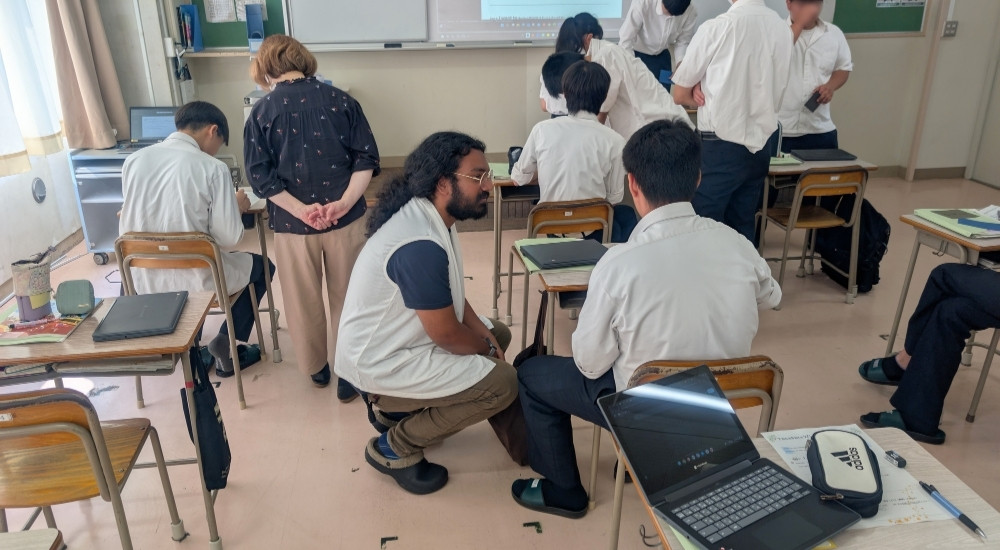
💬 Are there any cultural differences that aspiring ALT teachers should be aware of in the classroom?
“As before, ESID (Every Situation Is Different). This is the unofficial mantra of JETs. So what may be the case in my schools may not be the same in another. But I’ve noticed that Japanese classrooms operate on a completely different wavelength than what you might be used to back home.
First off, don’t take it personally if students fall asleep during your lesson. I nearly had an existential crisis the first time I saw a student peacefully napping while I was enthusiastically explaining the present continuous tense. Turns out, many students pull all-nighters for club activities, studies, or part time jobs, and teachers often let them rest. There’s little you can do about this.
In my case, I make a joke out of it (as I’ve now established a friendly rapport with my students—please don’t do this on day one) by getting down to their level and whispering Ohayogozaimasu (good morning) in a very high pitched voice. Or if they’re napping when I’m giving out worksheets, I’ll gently place it on their head. Again, this is after establishing a good rapport with my students. To do this on day one, would be VERY disrespectful.
Next, it’s scents and spatial awareness. In Japan there’s a sense of unity and balance, and anything which throws this off may upset some folks. In this case it’s scents. Now, back home, I like a decent parfum—something woody and smoky. However here, even two spritz of a scent can be off-putting. So try to keep it to a minimum. Eventually students came to associate spicy scents with a class with Nico or they’d ask me what scent I was wearing last class.
Also spatial awareness. Some students may feel extra pressure if you tower over them when helping them out. To help ease some of this pressure, I will instead squat down to get on their level.”
“Names and honorifics are a minefield. Some students melt when you use “-chan” with their name, while others find it infantilizing. I made the mistake of casually calling a quiet girl “-chan” only to discover she preferred being addressed formally as “-san”. Now I always ask privately first—”Hey, how should I call you in class?”
The noise tolerance surprised me most. In Trinidad, my teachers would shut down chatter immediately. Where I’m teaching, there’s an understanding that some side conversations are okay as long as the main lesson continues.
The biggest thing I’ve noticed is that there is this pressure to be correct and this fear of not getting it right. Students may hesitate to answer if they are uncertain of their answer.
As such, I’ve made it my mission to ensure that mistakes are accepted, and I keep reinforcing that I don’t want them to be immediately fluent, but rather just try their best. It also helps that I try to use my poor Japanese to show that it’s ok to make some mistakes, as it means you’re trying, and from those mistakes you’ll learn to be better.”
💬 How do you maintain a work-life balance as an ALT?
“It’s all about ruthless prioritization and embracing the inaka lifestyle. I try to enforce my “no school work after 5 PM” rule (a radical concept in Japan) and use my mountain of holidays for solo adventures. You surprisingly have a lot of holidays in Japan. I think the only month which is absent of any national holiday is June. So there’s always some sort of free days outside of your weekends.
In my case I’ve recently taken up long distance walks and runs. So on Saturdays, I’d pick two random points in my prefecture and walk between them, taking in every sight and side street I can. My longest distance so far was a ~35km walk from Chizu to Tottori which was full of beautiful shrines and forest views.“
💬 What has been the most rewarding aspect of teaching in Japan so far?
“I’d have to say it’s seeing my students warm up to me and using a bit more English with me. When I first arrived I was a very scary novelty. A brown Caribbean man in rural Japan is pretty much an oddity. Mix in my long hair and beard, and it can be scary to some.
At first I’d get the ‘foreigner seat’ on the train and bus. Now, however, I can’t seem to find a moment to myself as my students love to sit near me or around me, ask me what I’m listening to, what I’m looking at, or tease me with our inside jokes.
It honestly makes me feel like my interactions with them in the classroom has helped them be more open and relaxed. It’s also nice when they use some English or we do a bit of language exchange where they teach me some useful or funny Japanese phrases as well.“
💬 What advice would you give to someone considering teaching in Japan?
“Learn basic Japanese before coming—even just hiragana and survival phrases will save you so much stress. Pack comfort foods from home (within customs limits).
Most importantly, come with an open mind and patience—things work differently here, and that’s okay. The adjustment period can be tough, but it’s temporary.“
💬 What’s next in store for you?
“I came to Japan thinking it would be a one-year adventure, but Tottori has stolen my heart. Whether I renew with JET, transition to another teaching role, or even pursue further education here, I know Japan will be part of my future for years to come. For now, I’m just soaking up every moment of this incredible experience.“

Final thoughts
Nicholas’s story shows that teaching English abroad is not limited to only experienced teachers. With the right mindset, training, and qualifications, there’s a wide range of opportunities and destinations to discover.
Whether you’re drawn to joining the JET Programme for the chance to experience life in Japan, or prefer the flexibility of teaching online, there are many rewarding paths you can pursue in the field of English language teaching.
If you are interested in exploring a career as a certified English teacher, then now is the perfect time to take the first step and start your teacher training.





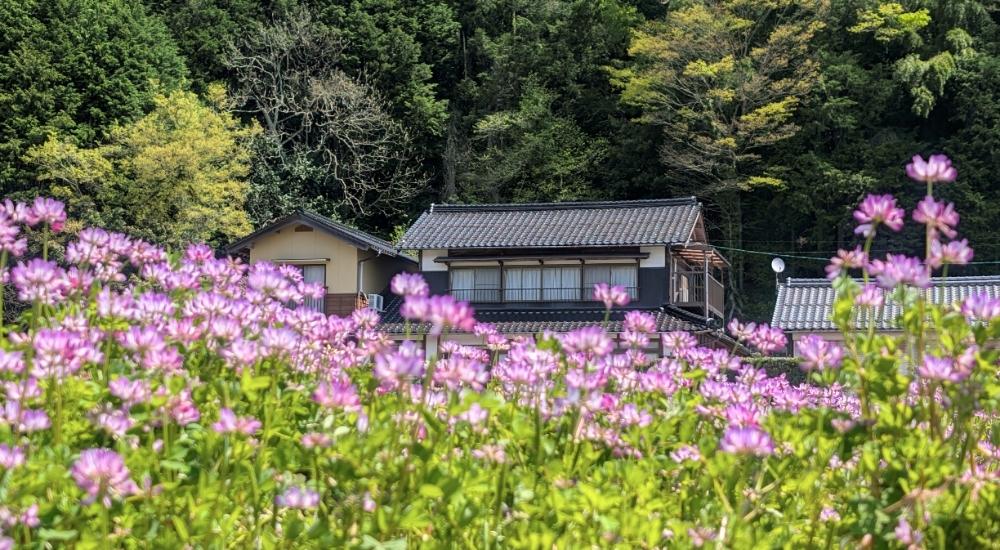
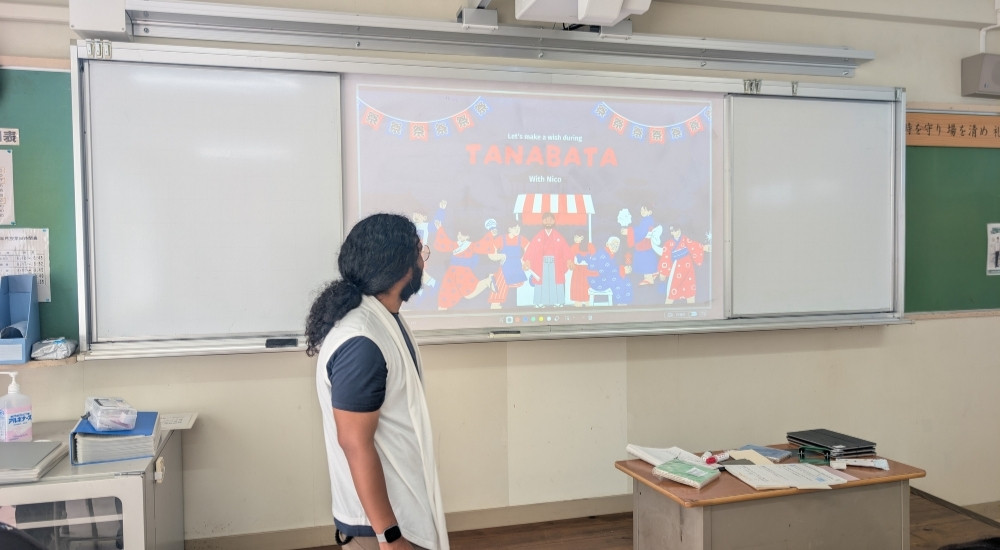
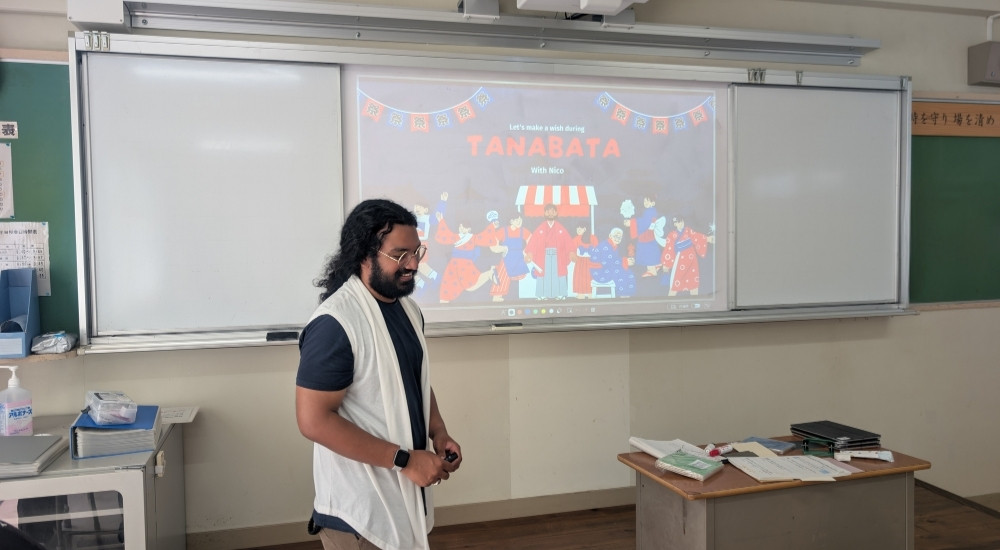
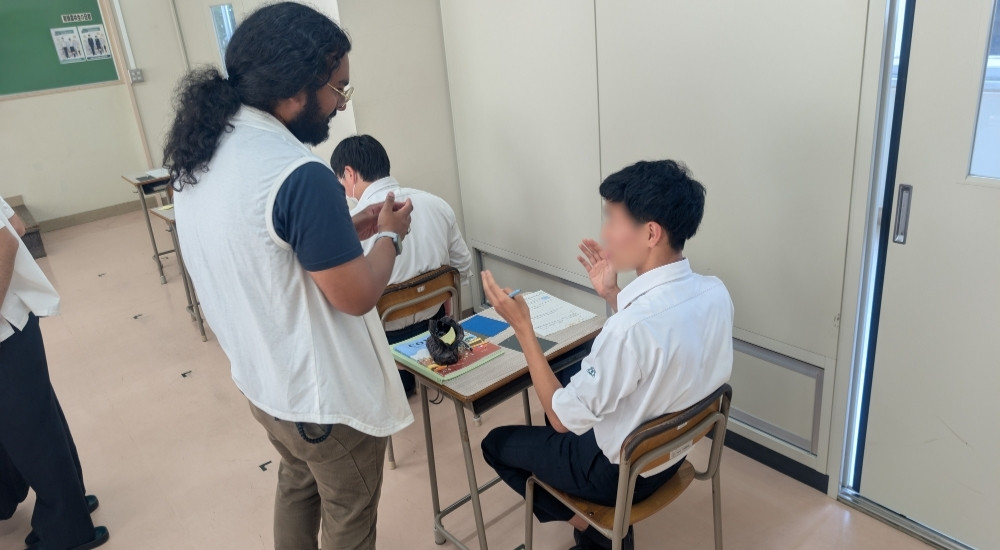



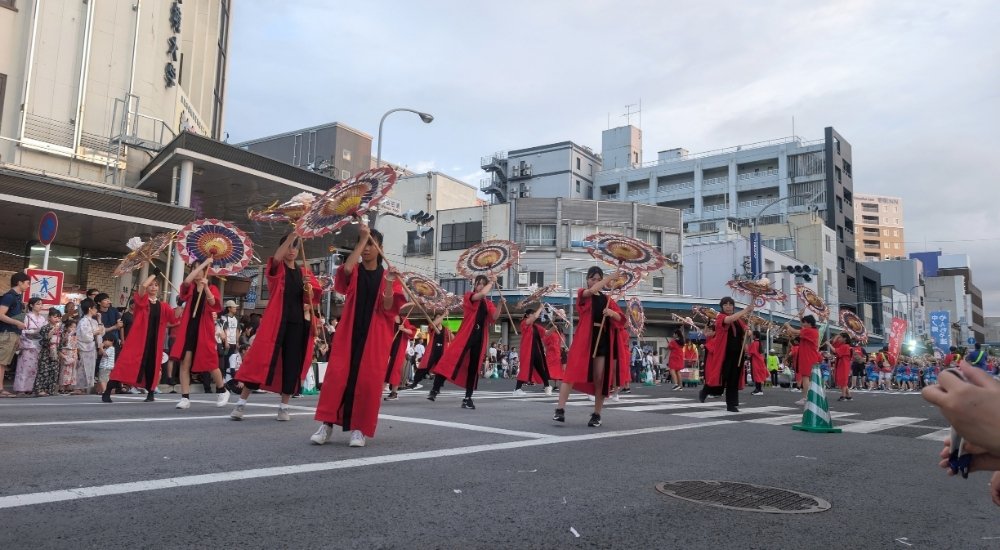

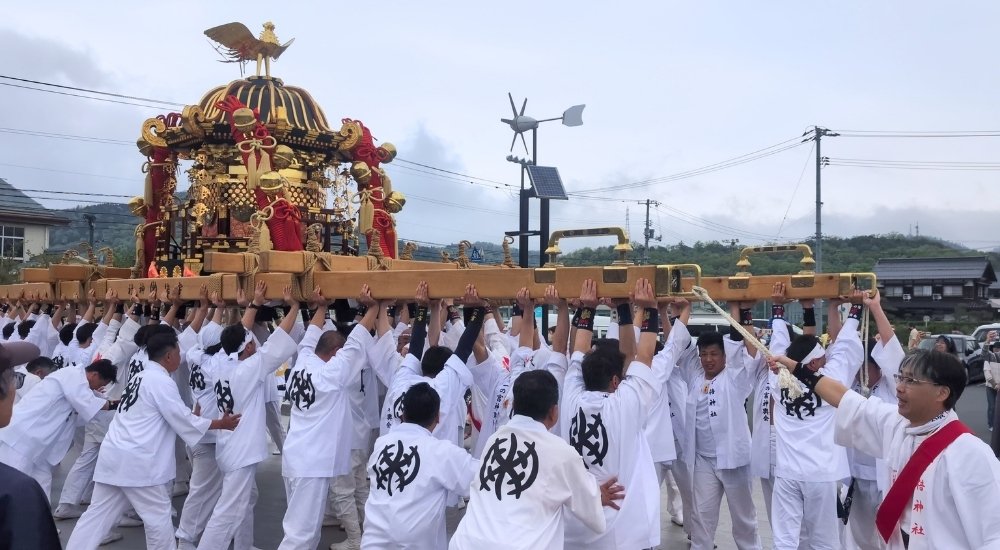

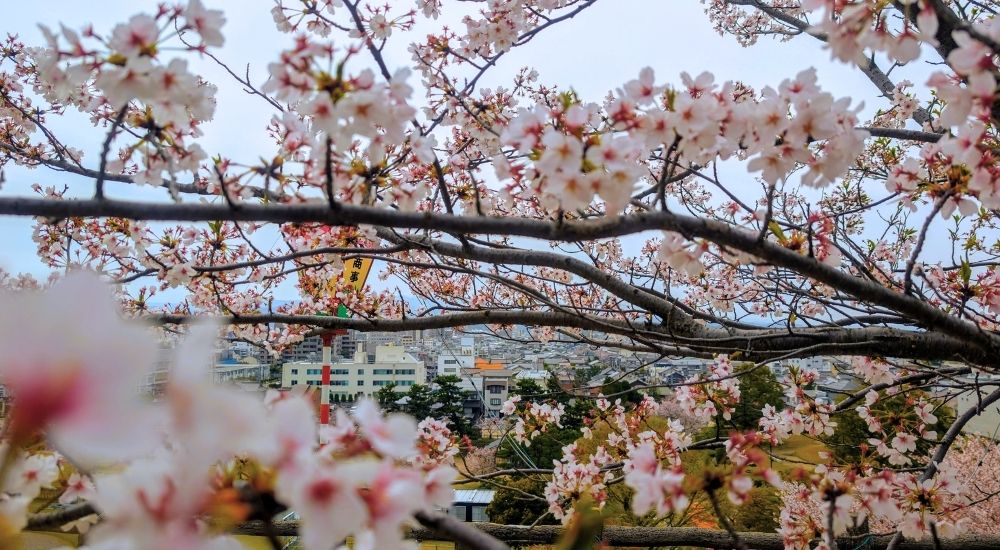

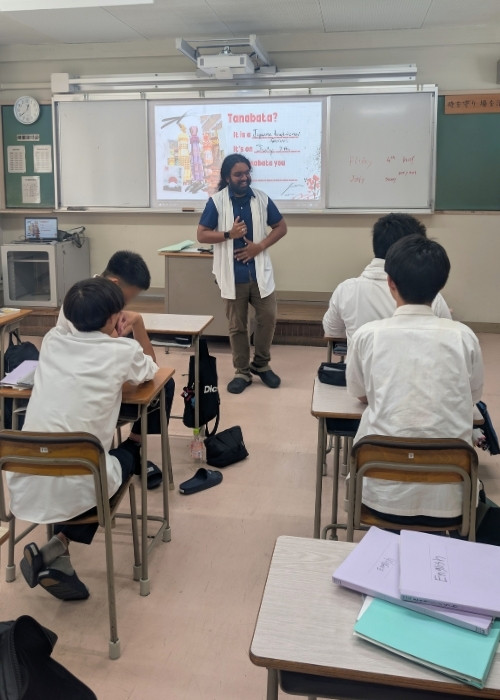
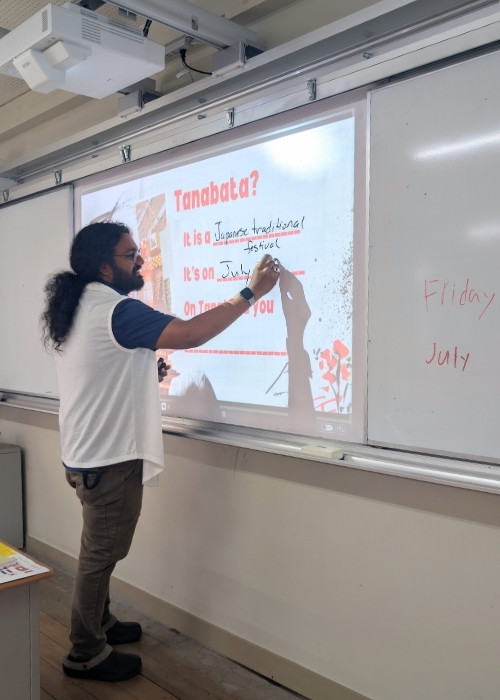

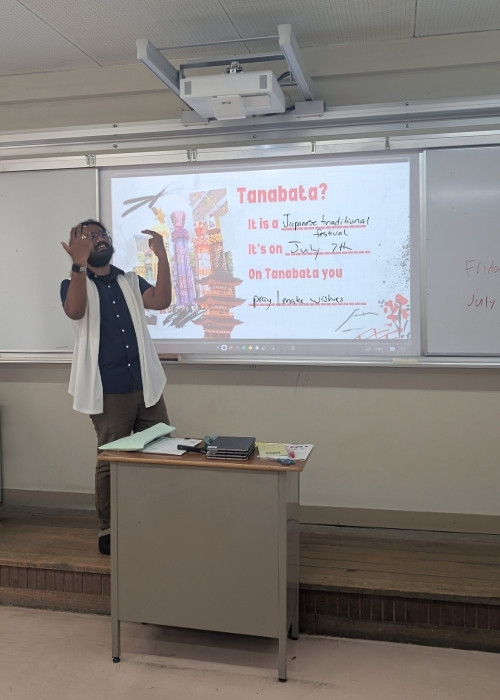
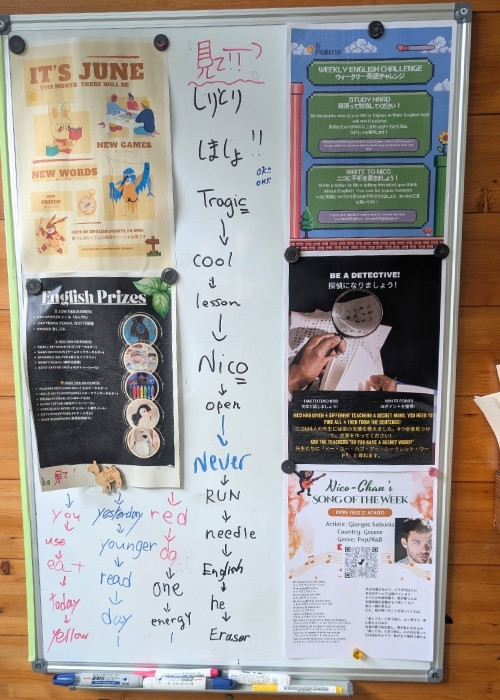
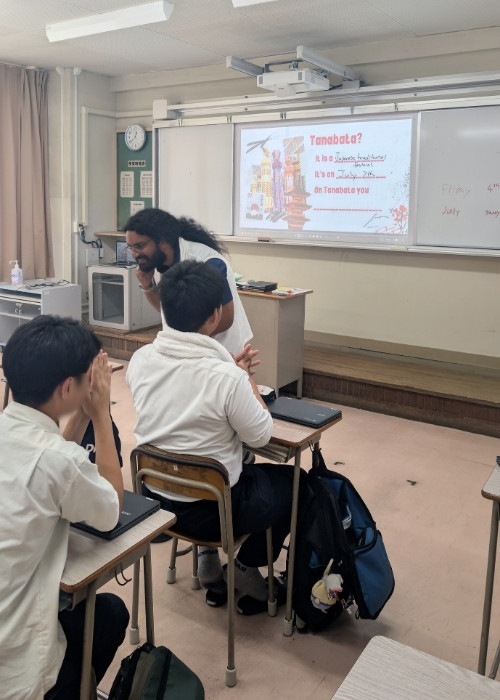
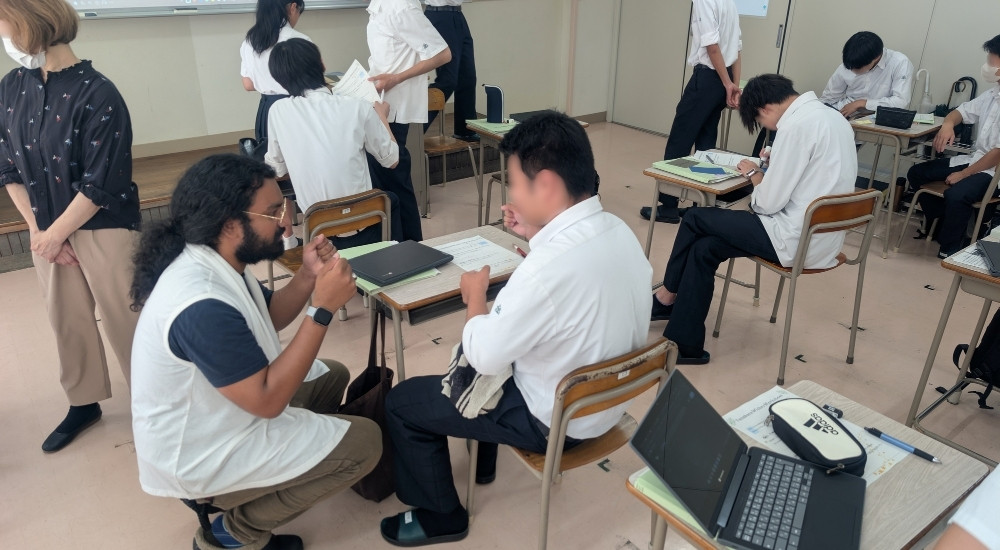
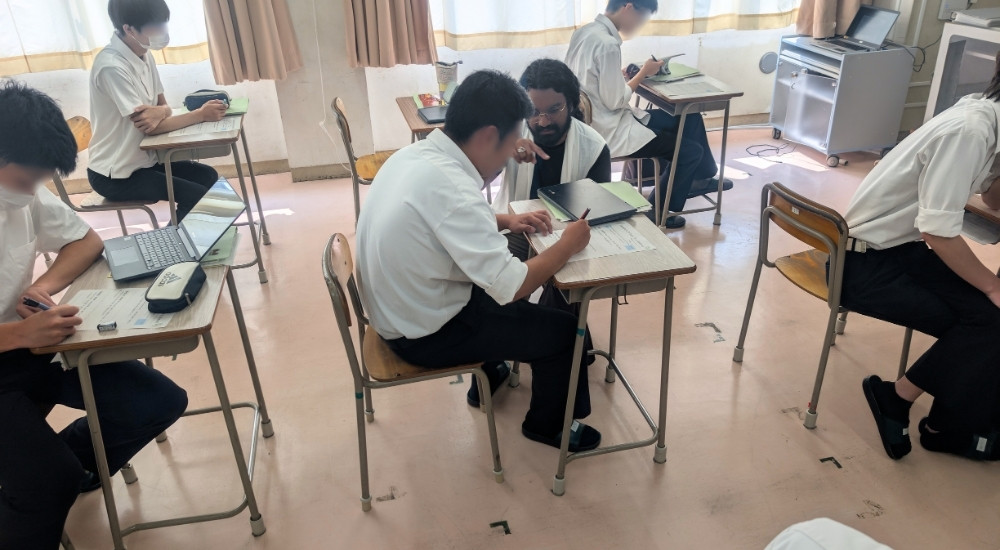




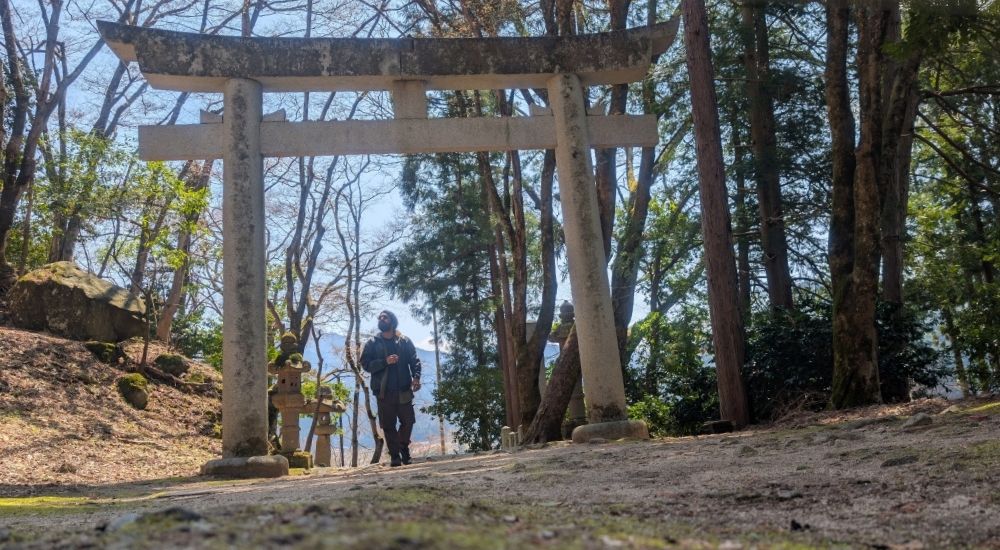

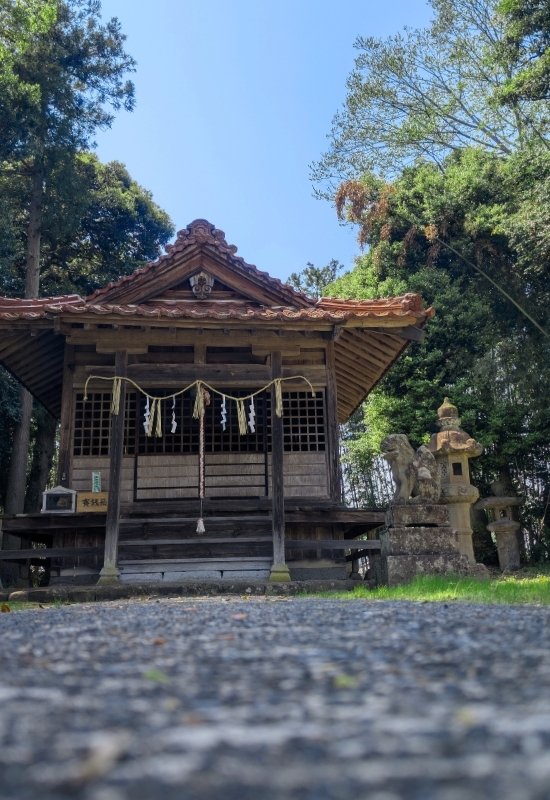


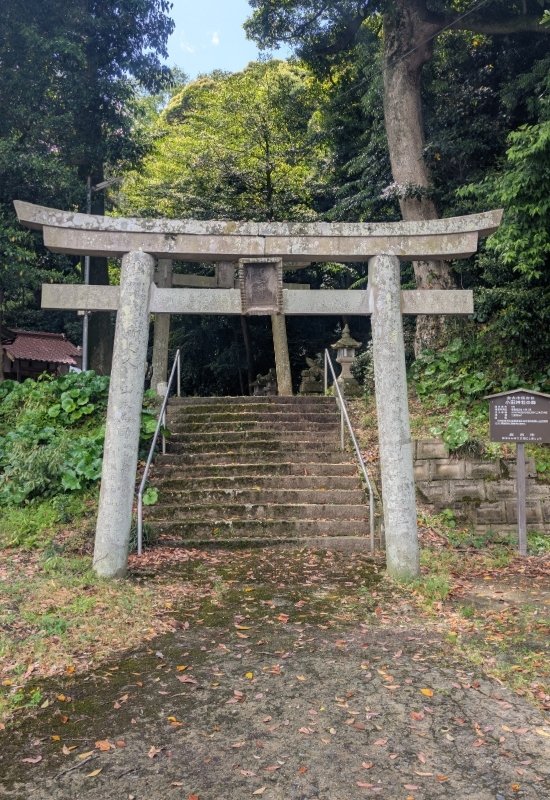





Leave A Comment